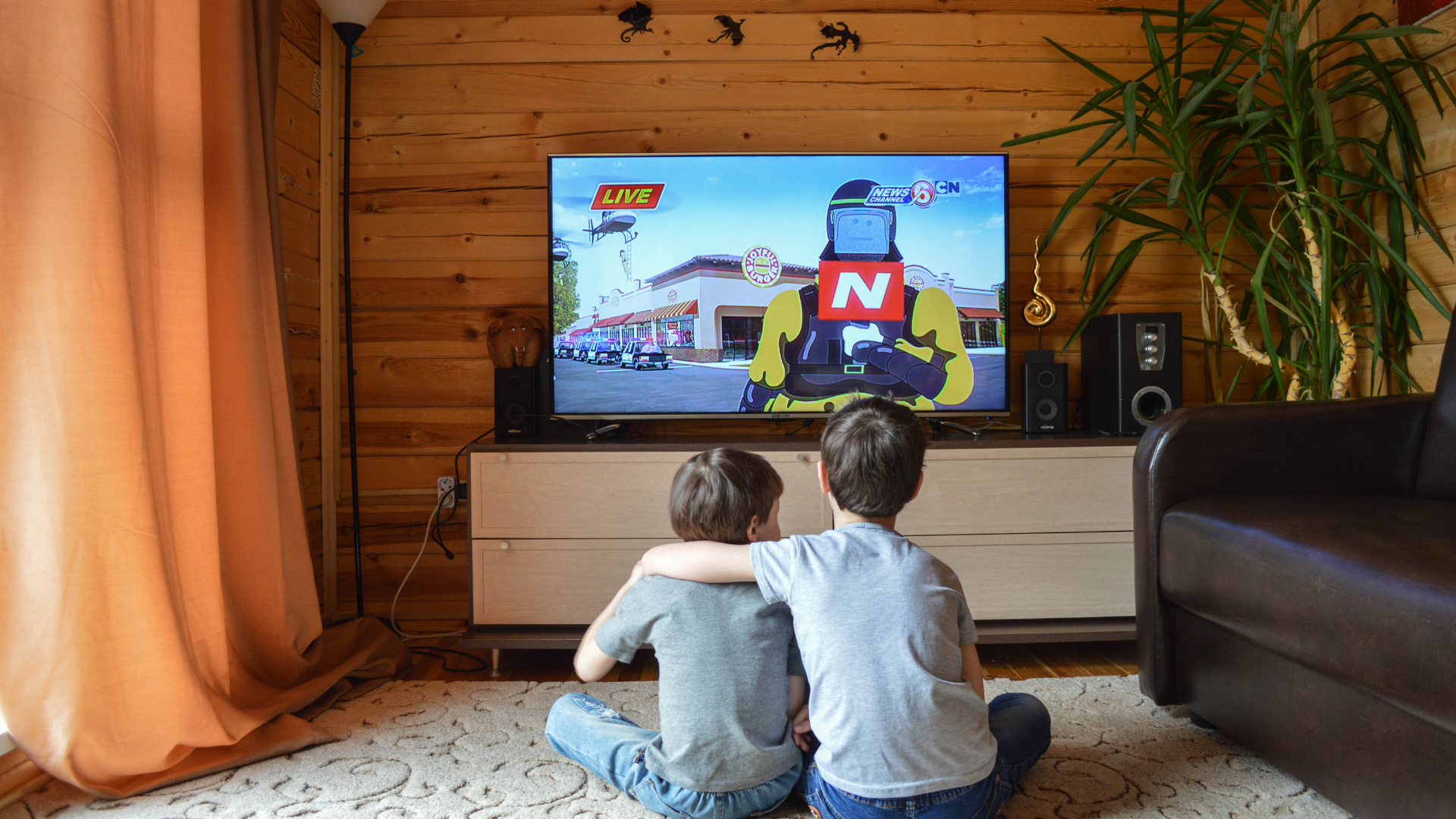How Yoga Creates Screen-Free Engagement for Kids
In today’s digital world, children are spending more time than ever in front of screens. While technology offers numerous educational benefits, excessive screen time has been linked to attention problems, sleep disruption, and reduced physical activity. Parents and educators are increasingly seeking meaningful alternatives that engage children’s bodies and minds without digital devices. Yoga presents an ideal solution, offering a structured yet playful approach to screen-free engagement that benefits children’s physical, mental, and emotional development. At Shyambhai Yoga, we’ve witnessed firsthand how our Online Yoga Classes for Kids can transform screen time into meaningful movement experiences that children genuinely enjoy.
The Screen Time Challenge
Before exploring yoga’s benefits, let’s understand what we’re up against:
• Approximately 42% of children under 12 years spend between 2 to 4 hours daily on smartphones or tablets
• Children aged 2 to 6 years have an average daily screen time of about 2.7 hours
• Around 60% of Indian youth aged 9 to 17 years spend over 3 hours daily on social media or gaming platforms
• Adolescents in Mumbai have an average screen time of approximately 2.9 hours per day, with 85% exceeding 2 hours daily
While complete elimination of screens isn’t realistic or necessary, finding a healthy balance is essential. The challenge lies in offering alternatives that children find equally engaging and parents find valuable.

Why Yoga Works as a Screen Alternative
Shyambhai Yoga offers a unique combination of elements that make it particularly effective at drawing children away from screens
1. Movement That Tells Stories
Unlike adult yoga classes that might focus on alignment or spiritual aspects, children’s yoga incorporates storytelling, imagination, and play. When children transform into trees, animals, or superheroes through yoga poses, they engage in the same kind of imaginative play that makes video games appealing, but with full-body involvement.
2. Challenge Without Competition
Children naturally seek challenges that test their abilities. Video games provide constant, calibrated challenges with immediate feedback. Yoga offers similar progressive challenges—balancing, stretching, coordinating movements—but without the competitive pressure. Children experience achievement through personal progress rather than winning against others.
3. Mindfulness Made Accessible
The concept of mindfulness can be abstract for children, but yoga makes it concrete through breathing exercises, attention to sensations, and present-moment awareness. These skills directly counteract the constant stimulation and dopamine triggers of digital entertainment.
4. Community Connection
While screens often isolate children, yoga—even when delivered through online classes—creates opportunities for connection. Family yoga sessions or virtual classes where children can see others participating foster a sense of community that screens alone rarely provide.

Key Benefits of Yoga for Digital Natives
Improved Attention Span
Digital media often fragments attention with quick cuts, notifications, and hyperlinks. In contrast, yoga poses require sustained focus. When a child holds tree pose for 30 seconds, they’re building the mental muscles needed for longer attention spans in other areas of life.
Research shows that regular yoga practice can increase children’s ability to focus during academic tasks and reduce symptoms of attention disorders. Even just 10 minutes of yoga before schoolwork can significantly improve concentration.
Enhanced Body Awareness
Many children today are more aware of their avatar’s movements in a video game than their own body’s position in space. Yoga rebuilds the mind-body connection by encouraging children to notice sensations, control their movements, and understand spatial relationships.
This improved proprioception (awareness of body position) translates to better coordination, balance, and physical confidence in daily activities.
Emotional Regulation Skills
Digital entertainment often operates at high emotional intensity with little opportunity for processing feelings. Yoga teaches children to recognize their emotional states and provides tools for self-regulation through breathing techniques.
Natural Energy Release
The sedentary nature of screen time often leaves children with pent-up physical energy. Yoga provides a structured outlet for this energy while simultaneously teaching calm. The combination of physical exertion and mindful relaxation helps children find their natural energy balance.
Making Yoga Engaging for Digital Natives
To successfully compete with screens, yoga for children must be presented in ways that capture their imagination and interest:
Theme-Based Sessions
Children respond enthusiastically to yoga sessions built around themes they love. Whether it’s space exploration, ocean adventures, or favorite storybook characters, thematic yoga sessions transform physical poses into an immersive experience. A simple forward fold becomes a shark dive; warrior pose becomes a rocket launch.
Integration of Games and Challenges
Yoga games incorporate elements children love about digital games—challenges, levels, and achievements—into physical practice. “Yoga Freeze Dance,” “Yoga Pose Memory,” and pose challenges create the same sense of progression and accomplishment that makes digital games compelling.
Implementing Yoga as a Screen Alternative
Parents and educators can successfully introduce yoga as a screen alternative by following these practical strategies:
1. Start with Short Sessions
Begin with just 10-15 minutes of yoga, gradually increasing as children build stamina and interest. Brief, successful experiences are more effective than lengthy sessions that lead to frustration.
2. Create a Special Space
Designate a screen-free area specifically for yoga practice. Even a small corner with a mat, a few props, and perhaps nature elements creates a physical separation from digital devices and signals a transition to mindful movement.
3. Consistent Scheduling
Set regular times for yoga practice—perhaps after school, before homework, or as part of bedtime routines. Consistency helps establish yoga as part of normal life rather than an occasional novelty.
4. Family Participation
When adults participate alongside children, yoga becomes a shared experience rather than an assigned activity. Family yoga fosters connection while modeling the value of screen-free engagement.
5. Leverage Quality Online Guidance
While it may seem contradictory to use screens to reduce screen time, structured online yoga classes designed specifically for children offer expert guidance that transforms passive watching into active participation. Unlike entertainment content, yoga instruction through online platforms like Shyambhai Yoga serves as a bridge to embodied, screen-free experience.
Also Read Yoga for Kids: Fun and Easy Poses for the Little Ones
Success Stories: Children Choosing Movement Over Screens
Parents who have introduced their children to yoga through our online classes report remarkable shifts in behavior:
Eight-year-old Maya used to spend hours on tablet games. After six weeks of regular yoga practice, she began creating her own yoga “shows” for family members, developing sequences based on her favorite stories. Her screen time naturally decreased as she found creative fulfillment in movement.
Seven-year-old twins Aiden and Emma transformed their competitive relationship by practicing partner yoga poses together. The cooperation required created a new dynamic between them that extended to other activities, reducing conflicts over shared devices.
Bringing Yoga Home: Practical Steps
Ready to introduce more yoga and less screen time for your children? Here are concrete steps to begin:
- Observe current patterns: Note when screen use is highest and identify potential yoga windows in your daily routine.
- Start with familiar elements: Incorporate poses inspired by your child’s favorite characters or activities as an entry point.
- Use visual cues: Create pose cards or a simple chart showing a yoga sequence children can follow independently.
- Celebrate progress: Acknowledge improvements in strength, balance, and focus rather than emphasizing perfect form.
- Seek expert guidance: Consider structured online yoga classes specifically designed for children’s developmental needs and interests.

Conclusion:
Through our specialized Online Yoga Classes for Kids at Shyambhai Yoga, we’ve witnessed countless children discover the joy of mindful movement, gradually choosing physical engagement over passive screen time. The transformation extends beyond reduced screen hours to improved concentration, better emotional regulation, and increased physical confidence—benefits that enhance all aspects of children’s development.
In a world where digital distraction is the norm, yoga offers children an opportunity to discover their innate capacity for focus, imagination, and embodied joy.
Inquiry
If you have any questions, please feel free to reach out. We’ll be glad to help!

